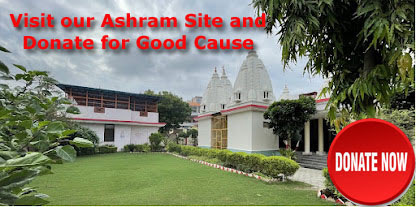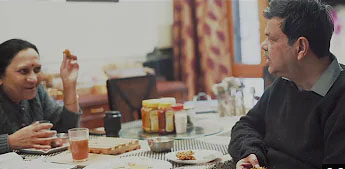Article by Astrologer Rajiv Sethi
With apologies to Tina Turner.......

With apologies to Tina Turner.......
The desire for romance and sex is one of the most enduring one in humans. In fact it is so strong that people will do almost anything to satisfy it. The Phrase ‘Everything is fair in love and war’ succinctly sums up our passion for love. It is for this reason that on every continent and in every civilization the male female relationship has been controlled by society at large. Social norms have been set and laws enacted to regulate one’s emotional and sexual life. Indeed one major religion does not permit more than one marriage, and barring some exceptions most countries do not allow polygamy.

In the first flush and exuberance of teenage, when the growth of frontal lobe of human brain overtakes the growth of the rest of the gray matter, emotions dominate the thinking process because the rational brain is still developing. All decisions taken by individuals are therefore highly emotional. Looks and biology figure predominantly in all relationships. Meeting and mating is all one wants and more the merrier seems a very attractive proposition.
By the time one comes out of this phase there is a glimmer of realization that relationships ought to be more meaningful. One may not be ready for marriage but a long-term relationship definitely seems attractive. The million-dollar question is how can we find the right mate? There is the hit and trial method which one has already tried and found wanting. In some societies the extended family may pitch in by introducing some promising mates. But this we all agree is not a reliable proposition. Blind dates often turn into dark evenings. So once we have experienced ‘been there – done that’ situation what else is left. The answer is Vedic astrology.
Vedic Astrology looks at the male female relation in a different light. It divides the human personality of two persons into four segments of spirituality, intellectual capacity, emotions and sex. It then looks for an overlap in these areas. Greater the overlap, better the relationship.
This division and matching is done mathematically and points are given for each overlap. More points indicate better compatibility. The converse is also true. The mental bias of the astrologer does not enter the picture.
The total points that the system generates are 36. Half of it is 18 and at this point the relationship is fine for short-term relationships. It is good for dining out, watching movies and spending weekends together. It rarely has the horsepower to keep the relationship going over the long haul. Cracks emerge and relationship falls through in a year or so. As always there are exceptions to the rule. If these 18 points are obtained in the emotional and sex categories, the relationship can last longer. After all the major requirements have been met. Nothing is perfect anyway.
In the fast moving life of present times, it is advisable to look for a higher number. 25 is good and anything above that excellent.
This is however only one part of the story. There are other factors that can make or mar a relationship. We shall take a quick look.
The whole gamut of hetero and homosexual relationships especially the mating part is ruled by the seventh house in a horoscope. This house, its planetary lord and the significator for marriage – Jupiter for females and Venus for males – should be strong and free from any influence of separatist planets like Sun, Saturn and Rahu. In addition to this Mars should not affect the twelfth, second, seventh and eighth houses because he tends to injure the connection. Under these circumstances, the relationship goes in a downward spin and eventually crashes and burns.
There are twelve signs in the zodiac and those that fall in the first, fourth, seventh and tenth position to each other promote compatibility.
Moon is closest heavenly body to earth and plays an extremely important part, so much so that Moon sign is given equal status to the birth ascendant.
What is true of the birth ascendant is also true of the lunar ascendant.
Our zodiac is divided in to 27 Nakshatra and each one spans 13 degrees and 20 minutes of arc. At the time of birth Moon will be occupying one of these segments. The Nakshatra occupied by Moon becomes the Janma (birth) Nakshatra and becomes an important tool in predictive work. Nakshatra that fall in the second, fourth, fifth, sixth, eighth and ninth from the Janma Nakshatra are exceedingly compatible and promote prosperity and happiness in each other’s life. For example if the Janma Nakshatra of one partner is Ashwini and the other partner happens to be born in Bharani, Rohini, Ardra, Pushya or Ashlesha Nakshatra, the relationship will prosper.
If the partner is born in third or seventh Nakshatra from Bharani utter chaos will prevail between the couple. This is irrespective of the sex. Gay and lesbian relationships will fare the same way.
There are other factors like mutual placements of Jupiter, Venus, and lagna lord in two horoscopes. These will shed some more light on the relationship.
The greatest advantage that Vedic astrology has over other systems like psychological profiling used in dating websites is that it goes to the root of the issue and immediately weeds out undesirable matches. It saves time and cuts the signal to noise ratio. Reception becomes crystal clear. One is left with one or two optimum matches, which can be explored further.
So next time some one warms the cockles of your heart, obtain the birth details and use astrology to figure out if it is the pay dirt or simply dirt.
Your questions and comments are very welcome.
Rajiv Sethi
rajiv@indian-vedicastrology.com© copy right 2009. No part of this article can be reproduced in any form without the written permission of the author.


















































No comments:
Post a Comment